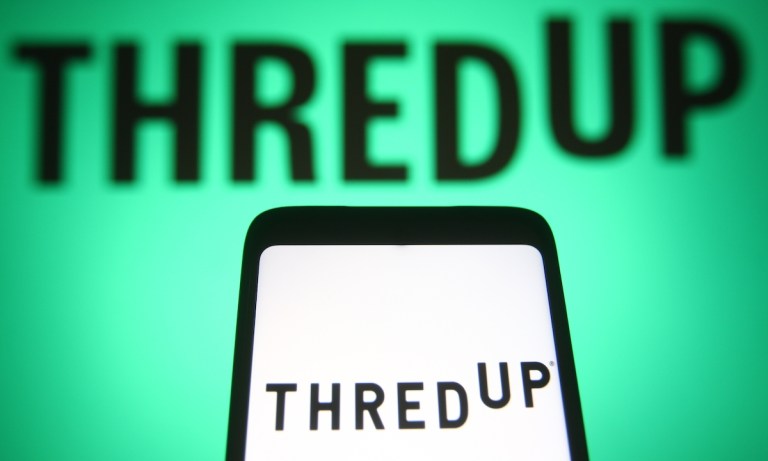ThredUp: Low Consumer Confidence Is Keeping Shoppers From Clothing Splurges

As consumers continue to feel economic pressures constrain their budgets, ThredUp sees shoppers pull back on buying clothes — even lower-cost secondhand ones.
On a call with analysts discussing its first-quarter 2024 earnings results, the resale platform observed that shoppers have been spending more conservatively. CEO James Reinhart noted that while these financial challenges have consumers turning toward more budget-friendly buying options such as secondhand marketplaces, shoppers are cutting back overall.
“You’re seeing some of the effects of a trade-down environment, given how well resale, I think, is positioned from a value perspective, but our perspective is that consumer confidence is actually now down … three months in a row,” Reinhart said. “I think the consumer is a little bit more cautious.”
Overall, however, as economic challenges continue, many shoppers are turning to resale platforms to get the products they want at more affordable prices. PYMNTS Intelligence’s “Consumer Inflation Sentiment Report: Consumers Shop Secondhand Stores as Often as Other Retail,” which drew from a survey of more than 2,300 U.S. consumers in December, found that 43% of consumers bought a secondhand product in 2023.
Among these thrifty shoppers, clothing was the most purchased resale item. Plus, those who have bought items secondhand said they purchase 58% of their clothing in this way, and they estimated they have saved 32% on cost from doing so, per supplementary research from the study.
Still, consumers are cutting back. The PYMNTS Intelligence report “New Reality Check: The Paycheck-to-Paycheck Report: Pessimism About Pay Rises Offsets the Effect of Falling Inflation” found that 60% of consumers have cut down on nonessential spending.
“That discretionary apparel environment remains [a] challenge for our consumer,” Reinhart said.
Plus, online resale marketplaces are beginning to face more competition from brands’ own secondhand platforms. In an interview with PYMNTS, Gayle Tait, CEO of Trove, a white-label resale platform for brands, said consumers are looking for these sorts of branded secondhand shops to take the chaos out of digital thrifting.
“There is a real desire for customers to shop resale on brand sites,” Tait said. “I think it’s a mistake to think that resale is really a marketplace shopping experience. If you think about how customers navigate their shopping experiences, brands are real beacons — they’re the entry point of that experience. Resale is the same, and we expect that this is going to continue to be a big piece of brands’ business moving forward.”
Additionally, resale marketplaces struggle to make the model profitable. In the quarter, ThredUp saw a net loss of $16.6 million — negative 20.8% of revenue.
Across the pond, European resale marketplace Vinted appears to have cracked the code, diversifying its platform to bring in revenue from as many parts of the experience as possible. The company announced last month that it achieved its first profitable year.
Looking ahead, ThredUp is turning to artificial intelligence to improve the consumer experience to drive conversion.
“In just the last 60 days, we have launched a new AI search experience and created two new AI-powered tools that allow consumers to thrift any style that inspires them,” Reinhart said during the call. “These tools make ThredUp the easiest place to dress no matter when the inspiration strikes.”
For all PYMNTS retail coverage, subscribe to the daily Retail Newsletter.